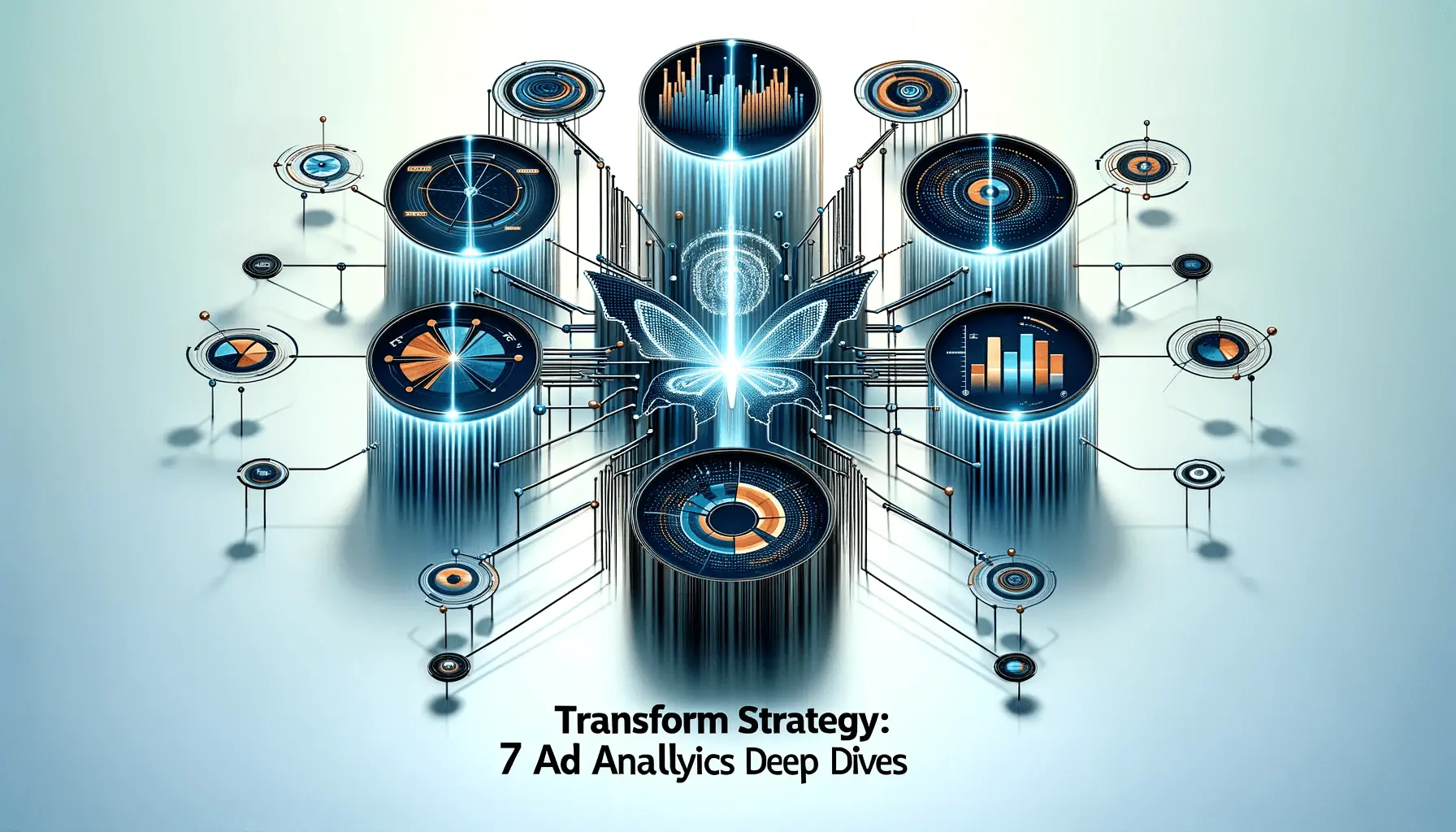Scaling your LinkedIn ad campaigns successfully requires you to know your audience inside out.
By being able to target the right professionals with tailored advertisements, you can get more engagement and achieve better results.
Let us explore how you can know and define your audience for ad scalability.
- Knowing Your Audience for Ad Scalability Successfully
- Creating Engaging Ad Creatives to Enhance Engagement
- Using Advanced Targeting Features for Precision
- Optimizing Bidding Strategies and Budget Allocation for LinkedIn Ads
- Implementing the LinkedIn Insight Tag for Enhanced Tracking
- Monitoring Key Performance Indicators (KPIs) for Campaign Success
- Maximizing LinkedIn Ad Scalability: Key Takeaways
- Frequently Asked Questions About LinkedIn Ad Scalability
Knowing Your Audience for Ad Scalability Successfully
Before you scale your LinkedIn ads, you should have a clear idea of who your target audience is.
This is the foundation of all your advertising efforts so that your messages reach the right people and evoke the reactions you need.
Start by examining LinkedIn’s professional demographics.
With over 700 million users, each with detailed profiles explaining their job titles, industries, and professional interests, the site offers a goldmine of demographic data.
By analyzing these demographics, you can identify which segments are most relevant to your business and optimize your ad scalability.
Utilizing LinkedIn’s Targeting Features
LinkedIn’s targeting features allow you to specify your audience using specific criteria such as:
- Job Titles: Target professionals whose job titles align with your product or service offerings.
- Industries: Target industries where your solutions provide the greatest value.
- Company Size: Determine whether your target customers are small businesses, medium-sized businesses, or enterprises.
- Geographical Location: Tailor your campaigns to locations where you have a presence or potential for expansion.
Creating Effective Buyer Personas
Creating buyer personas is another effective strategy.
Buyer personas are semi-fictional representations of your ideal buyers, based on real data and market research.
They should contain information such as:
- Professional Background: Education, career path, and current professional position.
- Challenges and Pain Points: Issues they face that your product or service can resolve.
- Goals and Objectives: What they are trying to achieve professionally.
- Preferred Content: The types of content they consume, including articles, videos, or webinars.
Leveraging LinkedIn Analytics for Audience Insights
Utilizing LinkedIn Analytics to understand your audience is crucial for ad scalability.
LinkedIn offers insights into how users interact with your content and advertisements, providing key metrics such as:
- Engagement Rates: Identify which posts generate the most engagement with your audience.
- Follower Demographics: Gain insights into the professions, industries, and locations of your followers.
- Content Performance: Determine which topics drive the highest levels of interest and interaction.
By deeply understanding your audience through these strategies, you can create highly targeted and effective LinkedIn ad campaigns.
This approach ensures a strong foundation for ad scalability and long-term success.
Creating compelling ad creatives is important to capture the attention of your audience and drive engagement on LinkedIn.
By making visual appeal, concise messaging, and continuous optimization your priorities, you can improve ad scalability and achieve better performance.
Understanding LinkedIn’s professional demographics allows you to create precise targeting strategies, ensuring better ad scalability.
Creating Engaging Ad Creatives to Enhance Engagement
To get the most out of your LinkedIn ads, it’s important to create creatives that speak to your target audience.
This requires a combination of strategic visual elements and compelling copywriting.
Creating Visually Engaging Ads
Visual content plays a crucial role in grabbing attention.
Here are some best practices to keep in mind:
- Use High-Quality Images: Incorporate clear, professional images that convey your brand message. Avoid generic stock images that may fail to connect with your audience.
- Keep Branding Consistent: Use consistent colors, fonts, and imagery in each ad to build brand recognition and strengthen ad scalability.
- Use Bold Colors: Utilize colors that stand out from LinkedIn’s neutral color palette to capture attention and increase engagement.
Writing Persuasive Ad Copy
Effective ad copy should be concise and directly address the needs of your audience.
Consider the following:
- Be Clear and Direct: Clearly state the value proposition and what you want the viewer to do.
- Highlight Benefits: Focus on how your product or service fills specific needs of your audience, reinforcing ad scalability.
- Utilize a Clear Call-to-Action (CTA): Encourage action immediately with bold CTAs like “Download Now” or “Get Started.”
Optimizing Creative Using A/B Testing
Continuous testing allows you to discover what resonates best with your audience.
Implement the following strategies:
- Test a Single Element at a Time: Alter only one variable for each test (e.g., headline, image) to isolate and properly gauge its impact.
- Run Tests for Sufficient Duration: Allow your tests to run long enough to gather useful data, a minimum of 14 days.
- Analyze and Iterate: Use the learnings to optimize your creatives continuously, improving ad scalability.
Incorporating Video and Rich Media Formats
Further engage your audience by leveraging dynamic content:
- Use Short Videos: Create videos of under 30 seconds that convey your message rapidly and efficiently.
- Add Subtitles: Include captions in your videos to communicate your message, even without sound.
- Use Carousel Ads: Utilize carousel formats to tell a story or showcase multiple products, encouraging interactive engagement.
By incorporating these strategies, you can create effective ad creatives that not only capture attention but also drive meaningful engagement, contributing to the ad scalability of your LinkedIn advertising campaigns.
Using the advanced targeting capabilities within LinkedIn is essential to reaching your intended audience and enhancing ad scalability.
By leveraging features like LinkedIn’s Matched AudiencesA LinkedIn feature that allows advertisers to create custom audience segments based on existing customer data. and retargeting strategies, you can present users with content tailored for those most likely to engage with your brand.
Visual appeal and concise messaging are crucial in LinkedIn ads. A/B testingA marketing experiment where two versions of an ad or webpage are compared to determine which performs better. different elements helps optimize ad creatives for better engagement.
Using Advanced Targeting Features for Precision
To get the most out of your LinkedIn ad campaigns, it’s important to go beyond simple targeting and explore more advanced options that enable granular audience segmentation, leading to better ad scalability.
Using Matched Audiences
LinkedIn’s Matched Audiences feature lets you create custom audience segments based on your existing customer data.
This helps you serve targeted ads to users who already know about your brand or have shown interest in your products or services.
Key strategies include:
- Website Retargeting: Remind visitors who have interacted with your site but have not converted, keeping your services or products top-of-mind.
- Contact Targeting: Import your email lists to reach out to individual people, such as current customers or high-value prospects, with personalized ads.
- Account Targeting: Aim your ads at a list of target accounts, ideal for Account-Based Marketing (ABM) initiatives focused on reaching decision-makers at specific organizations.
Utilizing Retargeting Campaigns
Retargeting is a powerful tactic to keep your brand in the minds of individuals who have already engaged with your content.
LinkedIn’s retargeting capabilities allow you to:
- Engage Video Viewers: Reach individuals who viewed at least half of your videos and have demonstrated interest in your products or services.
- Reengage Lead Form Openers: Target users who opened but did not submit your lead forms, encouraging them to complete the action.
With these advanced targeting features, you can refine the precision of your LinkedIn ads, leading to improved engagement and greater ad scalability.
Bidding strategies and budget allocation optimization are essential to maximize the effectiveness of your LinkedIn ad campaigns.
Proper bidding strategies and budget distribution can improve ad scalability and help you achieve your marketing objectives more efficiently.
Utilizing LinkedIn’s Matched Audiences and retargeting features helps refine ad precision, improving overall campaign performance.
Optimizing Bidding Strategies and Budget Allocation for LinkedIn Ads
To get the best results from your LinkedIn ad campaigns, it’s important to understand the available bidding strategies and how to allocate your budget effectively.
Understanding LinkedIn Bidding Strategies
LinkedIn offers several bidding strategies to fit various campaign goals:
- Maximum Delivery (Automated Bidding): Your bids are automatically adjusted by LinkedIn to deliver as many results as possible with the objective of spending your entire budget daily. This option is ideal for advertisers who prefer to maximize reach without managing bids manually.
- Cost Cap: This automated strategy allows you to set a target cost per result. LinkedIn will automatically bid on your behalf to achieve an average cost at or below your target cap, giving you control over your cost per conversion while benefiting from automation.
- Manual Bidding: You enter bid amounts manually for your ads, giving you full control over how much you wish to pay per click or impression. This is best for advertisers who require precise control over their bidding.
Effective Budget Allocation
Smart budget allocation ensures that your ad spend aligns with your marketing goals, contributing to better ad scalability.
Consider the following strategies:
- Set Clear Objectives: Define what you wish to achieve with your campaign—branding, lead generation, or conversions. Your objectives will determine both your bidding strategy and budget allocation.
- Start with a Low Budget: LinkedIn has a minimum daily budget of $10 for any ad format. Starting at this level allows you to test and optimize your campaigns before scaling up.
- Monitor and Adjust: Regularly check your campaign performance metrics. If certain ads or targeting strategies perform well, redistribute more budget into those areas to maximize returns.
By understanding and implementing the appropriate bidding strategies and budget allocation methods, you can maximize the ad scalability and performance of your LinkedIn advertising campaigns, ensuring that your campaigns yield the best results.
Implementing the LinkedIn Insight TagA tracking code provided by LinkedIn to gather data on visitor interactions for ad performance analysis. and monitoring key performance indicators (KPIs) are essential steps to enhance ad scalability on LinkedIn.
These tools provide valuable data to optimize your campaigns and achieve better results.
Strategic budget allocation and selecting the right bidding strategy help maximize return on investment while maintaining scalability.
Implementing the LinkedIn Insight Tag for Enhanced Tracking
The LinkedIn Insight Tag is a piece of JavaScript code that you add to your website to collect data on visitor interactions.
This tag enables you to track conversions, retarget website visitors, and gain insights into your audience’s professional demographics, all of which contribute to improved ad scalability.
Benefits of the LinkedIn Insight Tag
- Conversion Tracking: Monitor actions taken by users after interacting with your ads, such as form submissions or purchases, to assess campaign effectiveness.
- Audience Insights: Gain detailed information about your website visitors, including job titles, industries, and company sizes, allowing for more targeted advertising strategies.
- Retargeting Capabilities: Re-engage visitors who have previously interacted with your website, increasing the likelihood of conversions through tailored ad content.
Setting Up the LinkedIn Insight Tag
To implement the Insight Tag on your website:
- Access Campaign Manager: Log in to your LinkedIn Campaign Manager account.
- Navigate to Insight Tag: In the account assets section, select ‘Insight Tag’.
- Obtain the Code: Click ‘Install my Insight Tag’ to generate your unique JavaScript code.
- Add to Website: Place the code just before the closing </body> tag on each page of your website to ensure comprehensive tracking.
- Verify Installation: Use the ‘Verify’ option in Campaign Manager to confirm that the tag is functioning correctly.
Implementing the LinkedIn Insight Tag provides critical data for refining audience targeting and optimizing ad performance.
Monitoring Key Performance Indicators (KPIs) for Campaign Success
Regularly analyzing KPIs is crucial for assessing and enhancing the performance of your LinkedIn ad campaigns.
Key metrics to monitor include:
- Impressions: The total number of times your ad is displayed. High impressions indicate broad visibility.
- Click-Through Rate (CTR): The percentage of ad viewers who clicked on your ad. A higher CTR suggests that your ad content resonates with your audience.
- Conversion Rate: The percentage of users who completed a desired action after clicking your ad, reflecting the effectiveness of your ad and landing page.
- Cost Per Click (CPC): The average cost incurred for each click on your ad. Monitoring CPC helps manage your advertising budget efficiently.
- Engagement: The number of interactions (likes, shares, comments) your ad receives, indicating audience interest and engagement.
Understanding and tracking these KPIs enable data-driven decisions to optimize your campaigns for better ad scalability.
By implementing the LinkedIn Insight Tag and diligently monitoring relevant KPIs, you can refine your advertising strategies, enhance audience targeting, and ultimately achieve greater success in your LinkedIn marketing efforts.
Regularly tracking KPIs such as CTR, CPC, and conversion rates ensures continuous campaign optimization and sustainable growth.
Maximizing LinkedIn Ad Scalability: Key Takeaways
Scaling LinkedIn ads effectively requires a combination of strategic planning, data-driven decisions, and continuous optimization.
Utilizing the right targeting features, ad creative optimization, and bid strategy refinement enables businesses to scale ads significantly while maintaining efficient ad spend and increased engagement.
Understanding and Targeting the Right Audience
Knowing your audience is the foundation of every effective LinkedIn advertising campaign.
With LinkedIn’s professional user base, advertisers have the ability to create highly targeted campaigns that reach the right decision-makers.
- Utilize LinkedIn’s expert targeting features such as job titles, industries, and company sizes.
- Leverage Matched Audiences to reconnect with website visitors, existing customers, and high-value leads.
- Run retargeting campaigns to nurture prospects who have already interacted with your brand.
Creating Effective Ad Creatives
Ad creatives play a critical role in generating engagement and driving high-quality interactions.
A well-designed ad must combine powerful visuals and persuasive messaging to create maximum impact.
- Use high-quality images and bold colors to stand out in the LinkedIn feed.
- Maintain consistent branding across all campaigns to reinforce brand recognition.
- Develop short and readable ad copy that highlights the value proposition of your product or service.
- Include video content and carousel ads to provide interactive and immersive ad experiences.
Optimizing Bidding Strategies and Budget Allocation
Effective bidding and budgeting are crucial for cost-efficient and scalable LinkedIn advertising.
Understanding different bidding models allows advertisers to manage their budget strategically to maximize performance.
- Choose the right bidding strategy—automated, cost cap, or manual bidding—to align with your campaign goals.
- Start with a controlled budget and gradually scale as you monitor performance.
- Track key metrics such as cost per click (CPC) and conversion rates to optimize bids and spending.
Tracking Performance with the LinkedIn Insight Tag
Optimizing campaigns for increased ad scalability requires data-driven decision-making.
The LinkedIn Insight Tag provides valuable insights into audience behavior and campaign performance.
- Utilize conversion tracking to measure the impact of ads accurately.
- Gain deeper insights into audience demographics and engagement patterns.
- Use collected data to refine targeting strategies and optimize ad creatives.
Final Thoughts
Scaling LinkedIn ads effectively requires a comprehensive strategy that integrates audience insights, creative excellence, smart bidding, and performance monitoring.
Following these best practices enables businesses to build highly effective, scalable campaigns that maximize ROI and drive sustained growth.
As LinkedIn’s advertising platform evolves, staying informed about industry trends and leveraging advanced tools will be essential for maintaining a competitive edge.
Apply these strategies consistently, monitor performance metrics, and adjust campaigns based on data to ensure your ad scalability efforts continue to deliver strong results.
Scaling LinkedIn ads successfully requires data-driven strategies, effective audience targeting, and continuous performance monitoring.
Enjoyed the article? Let its author handle your social media ads. Visit our service page to get started!
Frequently Asked Questions About LinkedIn Ad Scalability
Scaling your effective LinkedIn ad campaigns successfully requires strategic thinking and a deep understanding of the platform’s various features.
Below are some frequently asked questions, along with concise answers to help guide your efforts.
Scaling LinkedIn ads means increasing your ad spend or expanding your target audience in successful campaigns to enhance brand awareness, leads, and sales.
It requires careful optimization to maintain performance and ensure cost efficiency.
Scale your campaigns when they consistently reach or surpass key performance indicators (KPIs) such as click-through rateA metric that measures the percentage of users who click on an ad after viewing it. (CTR), conversion rateThe percentage of users who complete a desired action, such as filling out a form or making a purchase, after clicking an ad., and return on investment (ROI), indicating readiness for expansion.
Scale effectively by testing different bidding strategies, optimizing ad creatives, refining audience targeting, conducting A/B testing, and continuously monitoring performance metrics to identify areas for improvement.
The two main methods are vertical scaling, which involves increasing the budget of high-performing campaigns, and horizontal scaling, which expands targeting to new audiences or introduces new offers to existing audiences.
Vertical scaling focuses on increasing the budget for existing successful campaigns, while horizontal scaling involves reaching new target audiences or introducing new products and services within current ad sets.
Monitor metrics such as click-through rate (CTR), conversion rate, cost per clickThe amount an advertiser pays each time a user clicks on their ad. (CPC), cost per lead (CPL), and overall return on investment (ROI) to gauge the effectiveness of your scaling efforts.
Maintain performance through continuous data analysis, performance-based optimization, refreshing ad creatives, and staying updated on LinkedIn advertising best practices and platform changes.
Yes, potential risks include increased costs without proportional returns, audience saturation, and possible declines in ad performance if scaling is not executed strategically and monitored closely.
Reduce risks by scaling gradually, setting clear performance benchmarks, conducting regular campaign performance reviews, and being prepared to adjust strategies based on real-time insights and data.












